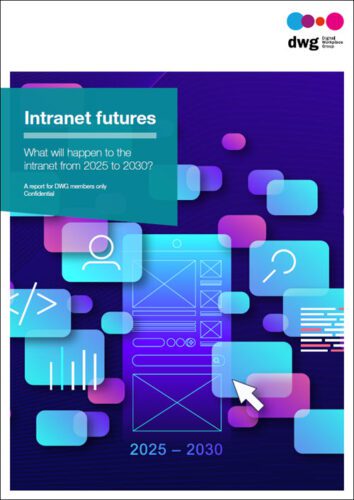Digital workplace overload: How to reduce employee technostress
We live in a time of unprecedented digital workplace “wealth”. The knowledge, connectivity and tools at our fingertips afford us new possibilities in how we work. And this year, we’ve seen just how essential this is in order to keep many people working, collaborating, productive and connected.
Yet there’s another side to this story. We also live in a time of application proliferation, information avalanches, storage gluttony, data smog and messaging mania. Our digital workplace wealth comes at a price to our precious, but limited, resources of attention. It can impinge on the valuable and yet finite cognitive resources of employees.
For digital workplace teams, minimizing such costs for individuals and teams is core to the delivery of a digital workplace that enables optimal performance for the organization and maximizes the wellbeing of its people.
 In new research from DWG, we explore the context and concept of digital workplace overload. We highlight key facts and figures from research as well as delving into the psychological concepts behind this phenomenon. We draw out key actions for digital workplace teams and individuals to reduce overload or avoid it altogether.
In new research from DWG, we explore the context and concept of digital workplace overload. We highlight key facts and figures from research as well as delving into the psychological concepts behind this phenomenon. We draw out key actions for digital workplace teams and individuals to reduce overload or avoid it altogether.
Download the free report: ‘Digital workplace overload: How to reduce employee technostress’.
Although not a new phenomenon, information overload has been brought sharply into focus in the digital age. But when we work digitally, we can be overloaded not just by the amount of information but also by the amount of communication, applications and features.
At DWG we define digital workplace overload thus:
“Digital workplace overload occurs when the amount of information and communication, as well as the number of applications and features, exceeds the individual’s cognitive processing ability, leading to an emotional and mental state of stress.”
Research shows that vast amounts of knowledge worker time is spent trying to manage the deluge of e-mails, information and interruptions. The result? Impacts to worker smartness, productivity and wellbeing that are costing organizations millions of dollars a year. It’s been shown that when we try to work in a state of digital workplace overload, our decisions are poorer, planned work doesn’t get done, errors are more frequent, creativity and innovation suffer, meetings and relationships decline – and eventually fatigue and mental exhaustion set in.
Digital workplace teams can play a key role in helping workers to get the tremendous benefits of digital working while avoiding the downsides. Drawing from psychology helps them to understand more about how the brain works, processes information, deals with interruptions, and copes with new technologies (the report provides a quick primer on the key theories!).
Tackling digital workplace overload needs to be done at three levels:
1. Organizational and leadership
Strategic clarity around the role and purpose of the digital workplace helps to set the scene for sensible tool provision and use, with leader behaviours key in establishing cultural norms that encourage healthy digital behaviours. Underpinning this with clear policies about use, as well as training and support in how to use tools optimally, is also critical.
2. Information and technology management
This is a key area of influence for digital workplace teams, and many of their existing practices and priorities can help reduce overload. These include streamlining content and communication, taking a user-centred approach, bringing tools and information together (e.g. single sign-on, dashboards) and reducing the noise (e.g. personalization). As tools advance, AI is starting to shoulder (some of) the burden.
3. Individual and team skills and tactics
Much can be done at the individual level, through developing better digital behaviours and habits. This is even more powerful when done at a team level, with collective agreements among co-workers on shared hours of working and messaging times, for example. The report goes into specific tactics to stay focused and handle interruptions, optimize communication, and deal with information and tools on a daily basis.
To find out more about reducing digital workplace overload for your employees, download the free report today.
Get access to 80+ best practice digital workplace reports
This report forms part of DWG’s best practice research library of 80+ reports covering key areas such as strategy and governance, personalization, user experience and change management for intranets and digital workplaces.
Find out what else is in the library and new research that’s coming up. Contact us to learn how to gain access to this library via DWG membership.
Take the next step…
Access DWG’s Research Library of 80+ reports via DWG Membership
Categorised in: Research reports
